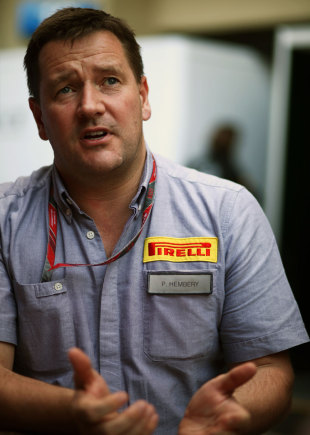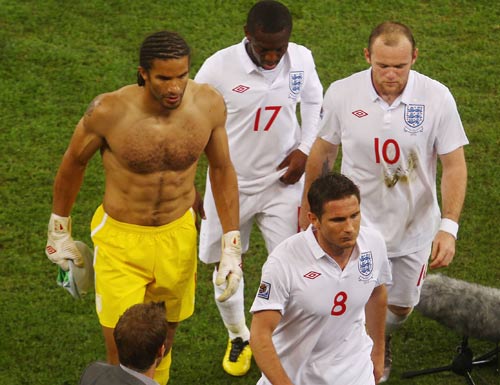- Paul Hembery Q&A
'Teams will have to get used to more degradation'
Laurence Edmondson January 23, 2013With Pirelli launching its 2013 tyres in Milan on Wednesday, ESPN caught up with motorsport boss Paul Hembery for an exclusive interview about what to expect from the new rubber

- In Focus:
- Tyres
Pirelli is launching its motorsport season and F1 tyres in Milan today, it must be a very exciting time for you and the company...
As a team we're working away on close to 140 different championships in over 40 countries and that's fun and lets us see motorsport on all levels. We see a lot of the grassroots sport and that carries it way through to the pinnacle that is F1; it's an interesting and vast coverage of the world of motorsport.
There are obviously different applications, but there's a lot of technology that we drive through F1, particularly in the areas of simulation and materials development and materials technology. In F1 we are doing sprints basically, but in other championships we are looking for durability and endurance, which is quite the opposite. There are some quite fundamental differences, but in terms of the way that you work and how you work there is a lot that we've gained from F1.
This F1 tyres being launched today have a new structure and new compounds, what are Pirelli's aims in terms of the characteristics of the tyres?
We saw a tendency towards the end of last year for very little degradation and the tyres were lasting too long, actually. We were moving towards races with just one stop and we knew we needed to make another step forwards in terms of the challenge and giving the teams something more difficult to work with.
The new structure will improve the mid-corner traction - the point when the drivers can put the power down essentially - and the structure itself in the belt back area is quite a lot more rigid and that leads to the tyre heating up more. We believe, from the brief test we had in Brazil, that that heating up will maybe lead to some more degradation. So it's a change but we know that when you give the best engineers in the world a challenge they will scratch their heads at the outset but very quickly they will become masters of any challenges we give them. We saw that in our first two years in F1.
If they are easier to get up to temperature is that going to help some of the smaller teams that maybe struggled a bit with getting the harder compounds to work last year?
That's certainly true. Last year whenever we took a slightly conservative choice, if that was going to cause a challenge for anybody it was going to be a team with a bit less downforce rather than the teams at the front. That could amplify, to an extent, the advantage of the teams at the front, but it remains to be seen how much development all the teams are doing. Have they already got an eye on the very dramatic changes in the regulations for 2014? And what are they planning to do in this transition year? That's going to be interesting to see when we get to winter testing.
This year there are also fewer changes in the regulations - last year it seemed the ban on exhaust-blown diffusers muddied the waters for the teams understanding of the tyres - does that mean it's been easier to get the kind of characteristics you want from the tyres?
Yes, I believe so. It was a very significant change to the cars last year that meant the teams were struggling to get a good temperature balance from the front to the rear of the car. We don't envisage that happening because the cars are so much more closely related to the previous year's cars. Taking that out of the equation will certainly assist the teams, but they will have to get used to a little bit more degradation than they were at the end of last year.
We had a couple of races last year - the US Grand Prix springs to mind - where we had exciting one-stop races. Is it still the aim of Pirelli, the teams and the sport to target multiple pit stops?
It's still between two and three [stops], that's what we are aiming for. The US was interesting because it was a new track and the drivers were still learning braking zones, so if we'd gone back a week later I think you would have seen a very different race. You've got to be careful how you draw conclusions sometimes at the races. We felt towards the end of the season that we'd maybe been slightly conservative with our choices, but we make our choices a few months out because the tyres are shipped in advance to the long-haul races at the end of the year. Once we made the decision we didn't really feel we could, with the championship still to play for, move from what we'd taken as a decision.
We would hope that we have an interesting start to the year again as the teams understand the challenge that we've given them and then evolve, as we've seen over the last two seasons, towards a point where they've understood the application of the new compounds and a different structure. Then it moves into a different phase where maybe we need to be a little bit more aggressive [with our compound choices] towards the end of the year.
Would it be possible to evolve the compounds as the season progresses to keep the teams guessing?
It would probably be a little bit unfair on the teams if they are working towards something and we make a change that gives an advantage to one particular team or two teams; we would obviously be criticised for having assisted them and you have to be really careful with those sorts of things. Ideally, if we are going to make any changes it would certainly have to be before mid-season because we don't want to be influencing the championship in any way or form.

Will we see any changes in the tyre markings and overall look of the tyres this year?
The hard tyre is now going to have an orange branding on it. We tried to make it clear last year when we were using medium and hard that if you could see the white marking on it then you knew it was medium and if you couldn't see it you knew by default it was hard. But that didn't work really, or if it did work it made our branding look poor. So we're going with orange and that should be very clear to see.
One change to the regulations that has been knocking around in recent years is the introduction of a qualifying tyre, has that idea gained any support from the teams and Pirelli?
We're still open to that. If there are any new ideas or different approaches we are open to them and would happily come up with a qualifying tyre if the teams thought it was necessary.
Is there anything specific Pirelli would like to see changed in the tyre regulations?
It was only when we had teams that weren't running in Q3, particularly in the first season, that we thought we were maybe short-changing the fans. So we weren't so keen on that. Having said that, when the cars were so close together last season there was still a good advantage to be had by running in Q3 so we didn't have as many issues with teams not running in Q3. It sort of solved itself last season. But going forward, you never know, we may come up with some super-sticky, one-shot tyres for qualifying and maybe increase the appeal of the qualifying sessions.
Pirelli doesn't yet have a contract for 2014, I know the company has said it would like to remain in the sport, but at what stage do you need a decision on that?
We'd like it early in the year. We have a lot of people involved in the F1 project, probably more than even the teams understand, so if you're not going forward you need to know relatively early so that you can start reallocating resources to other activities. We would certainly want to be knowing if we're staying within the first quarter really.
Is that purely a negotiation between you and the commercial rights holder?
Absolutely, and also making a proposal to the teams that they find acceptable. It's a two way thing between the commercial rights holder and the teams. The FIA we hope would have been pleased with the quality and integrity of our product. Their main concern would be in areas of safety and transparency, but we've not had any issues with that. It really is between the commercial rights holder and the teams themselves.
Would the engine change for 2014 require a technical rethink?
Not a huge technical rethink, no. The risk is probably in the area of traction because they are talking about having more torque than the current engines and maybe that would increase wear and overheating. But until we see more details of how the cars are going to be it's hard for us to comment. I'm sure it would be a very exciting first season when we have all those changes together.
Your Renault test car is still relatively new to you but the technology is three years old now, is that going to be an issue going forward?
We'd have to get a renewal [if we were going to change it] and it's about how relevant any of the past or current cars will be to 2014. So the work for 2014, by and large, I believe will be done by a simulator.
Are there any talks with other test drivers going forward?
No, Jaime Alguersuari is still around and we are happy to use him and Lucas di Grassi is doing a great job for us. We wouldn't see the need of changing for the sake of changing.
Laurence Edmondson is deputy editor of ESPNF1
© ESPN Sports Media Ltd.
 Laurence Edmondson is deputy editor of ESPNF1 Laurence Edmondson grew up on a Sunday afternoon diet of Ayrton Senna and Nigel Mansell and first stepped in the paddock as a Bridgestone competition finalist in 2005. He worked for ITV-F1 after graduating from university and has been ESPNF1's deputy editor since 2010
Laurence Edmondson is deputy editor of ESPNF1 Laurence Edmondson grew up on a Sunday afternoon diet of Ayrton Senna and Nigel Mansell and first stepped in the paddock as a Bridgestone competition finalist in 2005. He worked for ITV-F1 after graduating from university and has been ESPNF1's deputy editor since 2010

